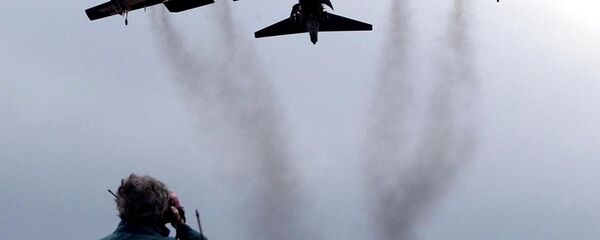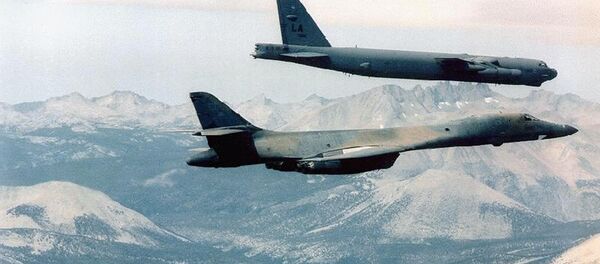"The idea that we would resort to a nuclear attack based on cyber is actually not supported by the document," Air Force Gen. Paul Selva, the highest-ranking man in the US Air Force and the vice chairman of the Joint Chiefs of Staff, told reporters on Wednesday.
"We reserve the right to use nuclear weapons when our national interests, our population, our infrastructure are attacked with significant consequence. There is a view that that was too ambiguous, and so [what] we went on to say was, 'This will include but is not limited to non-nuclear strategic strikes on our population, our infrastructure that are our allies and partners, or the command and control systems and indications of warning that are important to our detection of an attack,'" Selva said.
The key words are "include but is not limited to," as in nuclear weapons might be used in circumstances besides what is listed. So Selva clarified that the US will not reply to cyberattacks with nuclear force.
"We never said cyber," he told reporters. "[The US responding to cyber attacks with nuclear attacks is] just fundamentally not true."
"What the document does is it restates our pre-existing statement about use of nuclear weapons," Selva said, downplaying the clauses of the document that caused controversy. He claimed that the language was a rewording of what has been written in previous NPRs.
The NPR is consistent with Pentagon theory on the use of nuclear weapons since they were first developed and changed warfare for good in the 1940s, Selva stressed. While it was important to have clearly defined parameters for the use of such potent weapons, "context matters."
"If the attack has strategic consequence, if it kills a lot of people, if it interrupts our nuclear command and control and indications and warning systems — these are all hypotheticals — we… reserve the right to respond. Which is precisely what we said in [the] 2010 [NPR]. All we did is add one sentence [for clarity]," Selva said.
The final NPR is tentatively set to be released on Sunday. The draft attracted significant controversy as it pushed for the development of lower-yield nuclear weapons (so-called "mini-nukes") and seemed to call for an expanded scope of circumstances under which the US would be willing to launch a nuclear strike.
For instance, the plan included the development of lower-yield submarine launched ballistic missiles (SLBMs) to be deployed along NATO's eastern flank, to possibly be launched at Russia in case of a hypothetical war with Moscow.
But Selva downplayed that too, commenting that the smaller warheads such as the B61 nuclear gravity bomb and the W80 cruise missile warhead have been "in the inventory for decades."
"Having low-yield weapons does not in and of itself lower the threshold for use of nuclear weapons," Selva said. "So [we are] not lowering the threshold of us entering the fight, [but] raising the threshold of our potential adversaries — chief among them the Russians, who have thousands of low-yield nuclear weapons, and that is really key to the declaratory policy."
Earlier in January, Russian Defense Minister Sergey Shoigu announced that Moscow would spend the next three years modernizing its arsenal. "The main focus should be made on further bolstering strategic nuclear power. The share of advanced armaments in the Russian nuclear triad should constitute at least 90 percent by 2021," he told the Russian Defense Ministry.
And in July 2017, Russian President Vladimir Putin announced that, in case of imminent military conflict, "demonstration of readiness and determination to employ non-strategic nuclear weapons capabilities is an effective deterrent."
"Strategic" nuclear weapons tend to refer to high-yield weapons to target things like cities, bases and economic areas. "Non-strategic" or "tactical" nuclear devices, conversely, refer to low-yield weapons for battlefield use.
Selva added that whoever leaked the draft NPR to the Huffington Post, which published it on January 11, had committed a crime. The document had not been approved by military or energy leaders, he explained.








